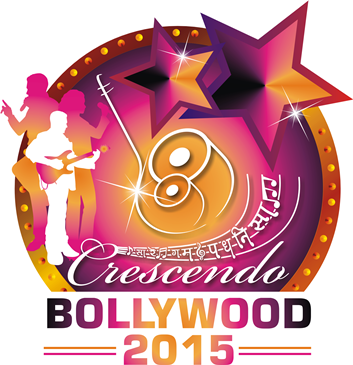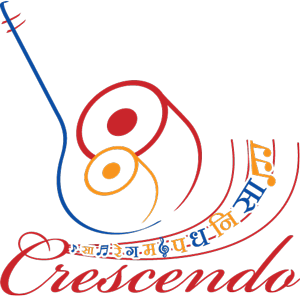| Tarapada Chakraborty | ||
|---|---|---|
| Gharana | None - None |  |
| Speciality | Vocal | |
| Guru |
Girija Shankar Chakrabarty | |
| Born | Please login to view this information | |
| Died | Please login to view this information | |
| More information at : | Please login to view this information | |
| Short Bio : | Information submitted below has been put here only for educational purpose and has been submitted by community users and users of the site. SwarGanga has not verified any copyright and takes no responsibility whatsoever. If you feel that you own copyright to the material below, please let us know and we will with you on the same. Sangeetacharya Tarapada Chakraborty Where time loses it meaning to music Sangeetacharya is an immortal name. The aesthetics of his music created a tradition anew, and ushered in a new era in the history of Hindustani Classical Music. His name is synonymous to the Kotali gharana- an expression of his paramount individuality and adherence to the traditions of multifarious Indian Music. Performer, Creator and Guru - Sangeetacharya is an endless world by himself. Kotali Gharana: The musical heritage of Kotali gharana (the schooling) emerges from a unique historical background, that spans beyond a millennium. At that time King Chandra Burma used to rule over a wide area of southwest Bengal during the reign of emperor Samudragupta. Kotalipara in the Faridpur Zilla of East Bengal (presently Bangladesh) owes its origin to “Chandraburmankot”, erected circa 315 AD, the remains of which are still extant. “Kot” stands for fort, “Ali” signifies “wall and area surrounding the fort”, and “para” means a settlement or “a neighbourhood”. Kotalipara was known as the second ‘Naimisharanya’ of India. It was inhabited predominantly by the Brahmins and was like a hermitage fostering advancement of the Sanskritic culture and philosophy in its various aspects. In the beginning there was a dearth of Sagnik Brahmins in this region. In 1019 AD Shyamal Burma (or Samal Burma), the king of this region invited Yashodhar Mishra, the son of Maheedhar Mishra of Kanyakubja and gave him 14 villages to settle down. In the following period on Shyamal Burma’s request Yashodhar Mishra brought thirteen more Sgnik Brahmins from Kanauj. According to the “Vaidik Kuladeepika” Yashodhar Mishra retained Kotalipara, Samantasar and Chandradweep in his own account and settled there with some Brahmins of other Gotras. He distributed the other villages among the rest of the Brahmins to settle down. He gave him fourteen villages for settling down. As far as history is concerned he retained Kotalipara for himself and settled down there. Gradually Kotalipara became a nucleus of musical and other cultural practices. Harihar Mishra, the 18th generation of Maheedhar Mishra received the title “Chakraborty” on performing the “Goshthipati Yag”. Various forms of music have been practised in this gharana from ancient times. Vaidik samgan, Marga/Natyageeti [Magadhi, Ardhamagadhee, Sambhaavita, Prithula and Dhruva] Prabandhageeti and many other kinds of ‘geet’ were in vogue. Later Biswambhar Chakraborty, a descendant of Harihar Chakraborty came in touch with the famous Veenkar and Rabaab player of his time, Saadik Ali Khan, son of the renowned Zafar Khan, a direct descendant of Tansen. Biswambhar learnt some dhrupad ‘Bandishes’ and ‘alaap’ as well as some Khayal bandishes through his association with Saadik, his nephew, Kasim Ali Khan and his disciple, Ganesh Vajpeyee [Source: Kalidas Chakraborty, son of Nyayaratna Ramchandra Chakraborty]. Since Biswambhar Chakraborty was directly involved with the mainstream Hindustani classical music he was naturally drawn to Dhrupad and Khayal. A near contemporary of Bishwambhar Chakraborty and a descendant from another stream of this large family Taraprasanna Chakraborty became a disciple of Jadubhatta of the Bishnupur gharana. The two streams of Seni and Bishnupur gharana from these two sources were carried forward through Biswambhar’s son Sheetalchandra Chakraborty, and his sons Ramachandra (Nyayaratna) and Kulachandra. Ramachandra (Nyayaratna) during his official sojourn in Berili received Taalim from Jahur Khan of Khurja gharana. Jahur Khan in turn took lessons in Sanskrit from Ramchandra. Kulachandra too joined these musical sessions for a short time. Nyayaratna Ramachandra Chakraborty was the Dwar Pandit (court scholar) and a court singer at the state of Natore. Kulachandra had three sons the younger two being Tarapada Chakraborty and Haripada Chakraborty. Their elder brother died at a very early age. Tarapada’s preliminary training was under his father and uncle. Later he came to Calcutta and received ‘taalim’ from Satkari Malakar, a pre-eminent exponent of the Gwaliar gharana. Finally he received taalim from Girija Shankar Chakraborty who was trained in various gharanas like Betia, Rampur, Jaipur, Seni, Banaras, Kirana, Agra, Delhi, and so on. In his sheer individual endeavour Tarapada earned many musical treasures which adding to his ancestor’s collection created a huge musical treasure trove. There were dhrupad, dhamar, khayal, tappa, thumri and other semi classical musical forms in this collection. Alongside he practiced various folk music and Keertan, which can be considered as a form of classical tradition unique to Bengal. His individual and ethereal style has etched a unique place for him in the realm of Hindustani Classical music. Sangeetacharya Tarapada Chakraborty became a legend in his lifetime. In truth he is the prime architect of the Kotali Gharana. Manas Chakraborty, the son and disciple of Sangeetacharya Tarapada Chakraborty is a living legend in the realm of Hindustani Classical Music. With his multifaceted talent, creativity, intellectuality and philosophical views and research on other classical Gayaki of musical traditions, semi classical and folk-forms of India, in alliance with his own tradition opened a new vista in the Kotali gayaki. The Kotali gharana was named after the name of the place of its origin in the phase following 2000 by him in accordance with his father’s wish. Shreela Bandyopdhyay, an able disciple and the eldest daughter of Sangeetacharaya Tarapada Chakraborty received training under her elder brother Manas Chakraborty too. She established herself as an outstanding vocalist of the Kotali Gharana. Haripada Chazkraborty and his elder son Bimalendu Chakraborty also received Taalim under Sangeetacharya Tarapada Chakraborty. Evidently Manas and Shreela were the prime ambassadors of this gharana who with their recitals kindled the light, essence and the multidimensional gayaki of this gharana in other parts of the world. Currently the vocal and instrumental artistes of this gharana are widely appreciated and established at home and abroad. Biography: A phenomenon in the world of Hindustani Classical Music, Sangeetacharya Tarapada Chakraborty is reckoned as one of the great musicians who dominated the field of Hindustani Classical Music in the middle of 20th century. Through his voice India heard a radical rhapsodic advent of a musical Renaissance in that era. The ethereal nuances of his voice enthrall listeners beyond time. His gayaki of khayal and his intrepid representation amongst the giants of the musical world those days such as Abdul Karim Khan, Faiyaz Khan, Omkarnath Thakur and figures alike enthroned him as the idol of modern Bengal. Born in April 1,1909 Sangeetacharya Tarapada Chakraborty’s initial training was based on the inheritance of his family tradition- a tradition that dates back over a millennium to the reign of emperor Samudragupta. His ancestors, invited to settle down in the region that later came to be known as the Faridpur Zilla of East Bengal, presently Bangladesh, brought with them from Kanauj (U.P.) the mother forms of Hindustani Classical Music i.e., sham gaan, natya geeti and other forms of geets which were carried through ages in his family. Tarapada’s preliminary training was under his father Kulachandra Chakraborty and uncle Nyayaratna Ramachandra Chakraborty. The latter was the Dwar Pandit (court scholar) and a court singer at the state of Natore. Later in Calcutta, Tarapada came to receive ‘taalim’ from Satkari Malakar, a pre-eminent exponent of the Gwaliar and Banaras gharana. He finally received taalim from Girija Shankar Chakraborty. Girija Shankar Chakraborty was trained in various gharanas like Betia, Rampur, Jaipur, Seni, Banaras, Kirana, Agra, Delhi, and so on. In 1929 Tarapada Chakraborty, made his mark as vocalist at an early age of 20 at the Albert Hall, Calcutta. He started his career as a radio artist in the early thirties. At the outset he was appointed as a tabla player on recommendation of Raichand Baral, the noted musical personage. The much desired break came all of a sudden when the eminent vocalist Jnan Goswami failed to attend his programme. Raichand Baral asked the talented young Tabla player to replace the maestro not in attendance. The rest his history. His popularity spread like wildfire throughout India. He started performing for national radio programmes and prestigious music conferences with renowned artists like Abdul Karim Khan, Faiyaz Khan, Mazaffar Khan, Baba Alauddin Khan, Hafiz Ali Khan, Omkarnath Thakur, Ananth Manohar Joshi, Kesarbai, Hirabai, Roshanara Begum, Bade Gulam Ali Khan and many others. Sangeetacharya Tarapada Chakraborty became a legend in his lifetime. Evidently Khayal received a rare authenticity and completeness in the heralding voice of Tarapada Chakraborty, in his exquisite poetics of sacramentality, bringing in the smell of the land. In his sheer individual endeavour Tarapada earned countless musical treasures which added to his ancestral collection and evolved into an immense musical treasure trove. There were dhrupad, dhamar, khayal, tappa, thumri and other semi classical forms of music in this collection. Alongside he practiced various folk music and Keertan, which can be considered as a form of classical tradition, unique to Bengal. He was the fourth generation to be enriched with the taalim of different gharanas, styles and forms of Hindustani Classical Music such as dhrupad, dhamar, khayal, thumri, tappa etc. Tarapada was a maverick. His individual and ethereal style has etched a unique place for him in the realm of Hindustani Classical music. His adroit mastery of the dominant gharanas of his time drove him to an inimitable style of his own. This style bears the mark of the maestro’s masterly vision-- a vision committed to the interrelationship between man and nature. His emphasis was upon the textual authenticity, austerity, self-realization, depth penetration and sonographic design of the text structurally articulating his kriya siddhi, opus achievement. The Kotali Gharana was established on the strong bases of the inheritance of his family culture and his own achievements of musical progression in the realm of Hindustani Classical Music. In truth Sangeetacharya Tarapada Chakraborty is the prime architect of the Kotali Gharana. He is the sculptor of full fledged Bengali Khayal. Sangeetacharya Tarapada Chakraborty was undoubtedly the one who first introduced the ati vilambit ektaal practically on which his gothic structure of vistara, behelwa, bandish gayan and various forms of intricate tans and sargams were based in his nonpareil style. One of the great pioneers of bangla khayal and rag pradhan, Sangeetacharya was a poet and composer too. Many bandishes of kheyal, thumri and other semi classical genres have been composed by him. Sangeetacharya wrote a book on music titled Suratirtha. He is acknowledged as one of the great gurus of all time. For his contribution to music he was given several awards by cultural organizations.He was made a fellow (Ratna Sadasya) of the Sangeet Natak Akademy of Delhi in 1972. Shortly before his death Sangeetacharya refused ‘PADMASHREE’ conferred on him by the Government of India. A consummate blend of tradition and individual talent, a shaper and representative of the aesthetics and philosophy of the musical art in the modern era Sangeetacharya left for his heavenly abode on 1st September, 1975. |
|
| Disciple tree | Please login to view this information | |
You might also like the following videos we randomly search for you from youtubePlease wait while we randomly search some videos |



